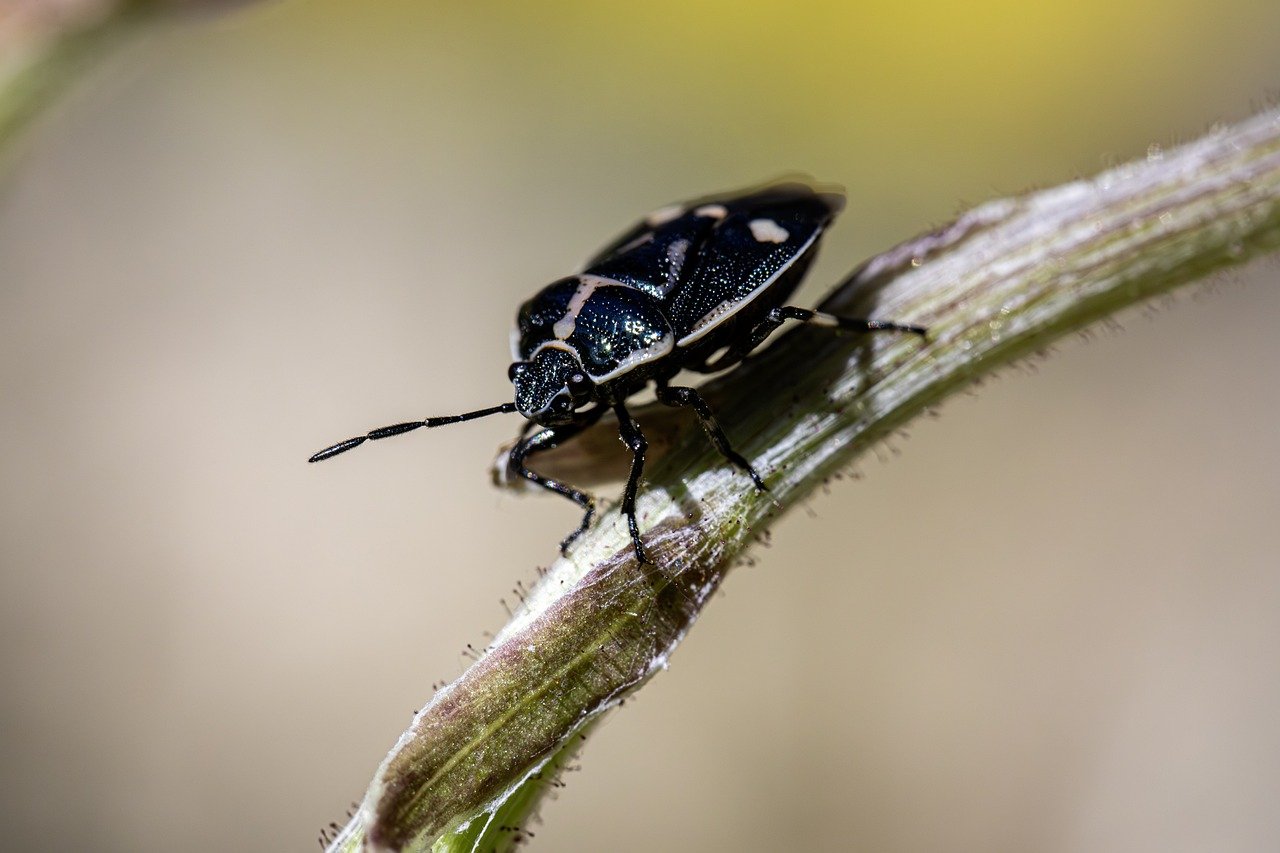The Brassica shieldbug (Eurydema oleracea), also known as the cabbage bug, is a species of true bug belonging to the family Pentatomidae. Here are some key details about this insect:
Appearance
- Size: Adult Brassica shieldbugs are relatively small, measuring about 5-8 mm in length.
- Coloration: They are characterized by their distinctive coloration, which includes bright red, orange, or yellow markings on a black or dark green background. The specific pattern and intensity of the colors can vary, but they typically feature contrasting spots and stripes.
Habitat
- Range: Eurydema oleracea is widely distributed across Europe and can also be found in parts of Asia.
- Environment: They are primarily associated with habitats where their host plants, mainly members of the Brassicaceae family (such as cabbages, kale, and mustard plants), are found. This includes agricultural fields, gardens, and wild habitats where these plants grow.
Behavior
- Diet: The Brassica shieldbug feeds on the sap of brassica plants. Both nymphs and adults use their piercing-sucking mouthparts to extract nutrients from the leaves, stems, and seed pods. This feeding can cause significant damage to crops, leading to yellowing, wilting, and reduced yield.
- Life Cycle: They undergo incomplete metamorphosis, with three main stages: egg, nymph, and adult. Females lay clusters of eggs on the underside of leaves. The nymphs hatch and go through several molts before becoming adults.
- Reproduction: Mating typically occurs in spring and summer, with females laying eggs soon after. Multiple generations can occur within a single growing season, especially in warmer climates.
Adaptations
- Camouflage and Warning: The bright coloration of the Brassica shieldbug can serve as a warning to potential predators about their unpalatability or toxicity. However, their patterns can also help them blend in with the colorful flowers and foliage of their host plants.
- Feeding Adaptations: Their piercing-sucking mouthparts are well-adapted for feeding on plant sap, allowing them to efficiently extract nutrients from their host plants.
Impact
- Agricultural Pests: Eurydema oleracea is considered a pest in agriculture due to its feeding on economically important crops like cabbages and other brassicas. Infestations can lead to significant crop damage and loss.
- Control Methods: Management of Brassica shieldbugs includes cultural practices such as crop rotation and removal of plant debris, as well as biological control using natural predators like birds and parasitoid wasps. Chemical insecticides can be used, but they must be applied carefully to avoid harming beneficial insects.
Ecological Role
- Biodiversity: Despite being a pest, the Brassica shieldbug is part of the complex web of interactions in agricultural ecosystems. It serves as prey for various predators and can be a host for parasitoids.
- Indicator Species: The presence and abundance of Eurydema oleracea can indicate the health of brassica crop fields and the effectiveness of pest management practices.
The Brassica shieldbug is an interesting species due to its striking appearance and its role in both natural and agricultural ecosystems. While it poses challenges for farmers, it also contributes to the biodiversity and ecological complexity of the habitats it occupies.
Visited 965 times, 4 visit(s) today
Views: 1610
Subscribe to the newsletter:
